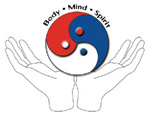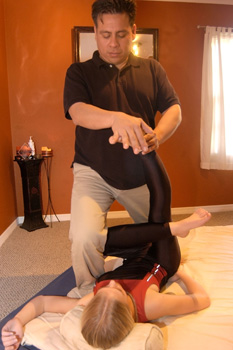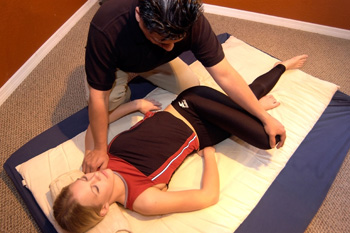
|
Integrative Touch and Bodywork
Natural Pain Care
Through Massage Therapy
|
Integrative
Thai Yoga Bodywork
 |
Although Shiatsu has enjoyed more popularity than Thai
Yoga Massage (AKA Thai Massage), Thai Massage has a more ancient and
revered tradition. This ancient healing art has roots in Ayurvedic and
Traditional Chinese Medicine.
In modern day Thailand, it is known as Nuad Bo'Rarn; the
core component of the 4 aspects of Traditional Thai medicine. Nuad means
"to touch with the intent to impart healing," Bo 'Rarn means "something
which is ancient & revered."
The historical founder of Thai medicine is Jivaka Kumar
Bhaccha. According to tradition, he is identified as a close personal
associate of the historical Buddha.
He served as head physician to the sangha, the community
of followers that gathered around the Buddha. By most estimates, that
would place him living in India about 2,500 years ago.
Over centuries, a distinct tradition emerged that
integrated the ayurvedic traditions from India and the theory & practices
from China. |
This ancient healing art was passed on from one generation to
the next by oral tradition. By the time Theravada Buddhism was declared the
official religion of the kingdom, in 1292 A.D., the healing practice of Thai
Massage was already being administered in the Buddhist temples, known as Wats.
According to Buddhist philosophy, healing work is widely
accepted as the practical application of metta, or loving kindness. Metta is
understood as a core component of daily life for each individual seeking
awareness and fulfillment of one’s life path. Teachers describe metta as the
“foundation of the world,” essential for the peace and happiness of oneself
and of others.
| Accordingly, the practice of Thai Massage demonstrates the
practical application of the four divine states of mind: 1) metta 2)
compassion 3) vicarious joy and 4) mental tranquility (through meditative
practices).
The Licensed Massage Therapist will use their developed sensitivity and
intuition to isolate and treat along 10 major Sen lines (similar to
meridians in TCM) and release stagnant Prana, or energy (similar to chi in
TCM). The Therapist will also work with concentrated points of spiraling
energy, known as Marmas. |
 |
These are powerful points that, when released, can eliminate dis-ease,
relieve pain and restore health and a sense of well-being.
We are calling our evolution of this modality Integrative Thai Yoga Bodywork
because we have incorporated a highly effective and powerful form of facilitated
stretching techniques known as Muscle Energy Techniques. This form of stretching
is easy to apply, painless to receive and often produces significant
improvements in flexibility, pain reduction, soft tissue pliability and most
importantly body awareness.
We hope to share the beauty, simplicity and elegance of this modality with
all of you…Namaste.
Additional
ITandB Pictures
References:
- Gold Richard M. A Guide to Traditional Thai Massage. Massage Therapy
Journal, Fall 2005.
- Mann N, McKenzie E. Thai Bodywork, Octopus Publishing Group, 2002.
- Chow Kam Thye Thai Yoga Massage, Healing Arts Press, 2002.
|
